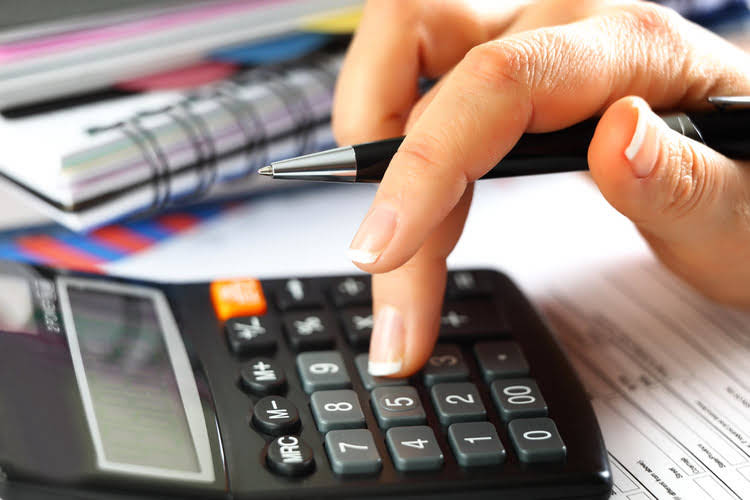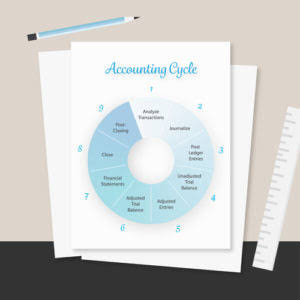
It can have a significant impact on cash flow and the overall health of a business. When a good or service is purchased and received, but not yet paid for, the operating expense will appear as a regular expense on the income statement and the same amount will be added to Accounts Payable. At the beginning of the period, the accounts payable balance was $50 million, but the change in A/P was an increase of $10 million, so the ending balance is $60 million in Year 0. In short, a higher days payable outstanding (DPO) is often indicative of a company’s operations becoming more efficient, since its free cash flow (FCF) improves. The Accounting Periods and Methods accounts payable metric, by itself, offers minimal insights into the operating efficiency of a company. Hence, the necessity to calculate the days payable outstanding (DPO) of a company on a trailing-basis.

Impact of Accounts Payable for the Business
The AP department usually handles internal expenses as well, such as business and travel expenses. “Accounts payable” refers to the money a company owes its vendors for goods or services already received. Think of it as an IOU between businesses that must be paid off in a short period of time. If a company pays its suppliers and vendors in cash immediately upon receipt of the invoice, the accounts payable balance would be near zero. Given the accounts Partnership Accounting payable balance as of the beginning of the accounting period, the two adjustments that impact the end of period balance is credit purchases and supplier payments.

What does AP stand for in business?

To expand your offerings and better serve your clients, today’s accountants need a complete solution to streamline operations and automate the accounts payable process. Accounts payable is a short-term liability, while expenses are operational costs income statement accounts incurred over an entire fiscal year. The accounts payable is recorded as a future obligation for a business rather than an expense since it generally fulfills the definition of a liability rather than an expense. An accrual expense is an expense that has been incurred due to a transaction for purchasing goods or services but has not been paid yet.

Tax & accounting community
- Accounts payable and its management is important for the efficient functioning of your business.
- Accounts payable are liabilities that represent the purchase of goods or services that a business has not yet paid for.
- The chart of accounts helps you track your accounts payable expenses in a proper manner, and you can also generate your chart of accounts in Microsoft Excel or Google Sheets.
- While Accounts Payable itself does not appear on the Income Statement, it contributes to several line items like Cost of Goods Sold (COGS), Operating Expenses, and Net Income.
- Striking variations on an income signal that a company’s finance team may need to make changes or adjustments, including switching suppliers, revising prices, or slashing the budget.
- For example, consider the case of an air ticket invoice for business travel sold to a company that makes widgets.
Cash flow statements reconcile net income to calculate how much cash entered or exited the company’s bank account, so AP appears as a positive value there. In this case the amount is added back to net income to account for the fact that cash has not been paid yet even though the expense was already recorded. Accounts payable can be found in several places throughout a company’s financial statements. The change in accounts payable is recorded on the cash flow statement (CFS) in the cash flow from operating activities (CFO) section. Upon receipt of an invoice, the company records a “credit” in the accounts payable account with a corresponding “debit” in the expense account.
- Accounts payable (AP) are often mistaken for a company’s core operational expenses.
- • Reporting accounts payable on the balance sheet provides stakeholders with a snapshot of a company’s financial position and its ability to pay its debts.
- For example, the ‘Accounts Payable Aging Summary’ report, not only tells you about the vendors that you owe money to, but it also highlights the invoices against which payments are overdue.
- In short, accounts payable are considered current liabilities because the outstanding balance represents money owed by a business to its suppliers and vendors.
- The accounts payable account is recorded as an operating activity in the cash flow statement of the business.
- The Income Statement, also known as the Profit and Loss statement, is a financial document that shows a company’s revenue, expenses and net income over a specific period.
- Accounts payable, also known as trade payables or vendor payables, represents the amount of money a company owes to its suppliers or vendors for goods or services purchased on credit.
- The receiving company records AR under the current assets section of its balance sheet.
- In this article, we will talk about the what accounts payable means, the accounts payable journal entry, the accounts payable process, and examples of accounts payable.
- In other words, the total amount outstanding that you owe to your suppliers or vendors comes under accounts payable.
This kind of list can be developed considering certain factors, including the supplier’s performance, their financial soundness, brand identity, and their capacity to negotiate. Therefore, if your business has only a few accounts payable, you may record them directly in your general ledger. However, if you have a large number of accounts payable, you’ll first record the individual accounts payable in a sub-ledger. On the other hand, an expense is an obligation that has already been paid or settled. The basic way to find where an account appears is to distinguish whether it is a liability or an expense account. For information pertaining to the registration status of 11 Financial, please contact the state securities regulators for those states in which 11 Financial maintains a registration filing.
Is Accounts Payable a Current Liability?
- The cash on hand can be spent on reinvestments, to fund day-to-day working capital needs, and meet unexpected payment obligations.
- The main difference between accounts payable and expenses is how they are recorded on a company’s financial statements.
- Further, the clerk undertakes the processing, verifying, and reconciling the invoices.
- The first step to calculate the accounts payable on the balance sheet is to determine the opening AP balance at the start of the period (or ending balance in the prior period).
- When a company purchases goods or services on credit, it is essentially borrowing money from its suppliers.
Streamlining the accounts payable process is an essential part of growing and developing your business, though, as managing accounts payable is a backend task, it is often overlooked. You need to make your accounts payable process efficient so that it provides a competitive advantage to your business. As such, businesses must ensure that their procurement processes are efficient to maintain accurate reporting practices while minimizing expenses where possible. Procurement can make all the difference when it comes to reducing costs for your business while also improving supply chain efficiency. While Accounts Payable itself does not appear on the Income Statement, it contributes to several line items like Cost of Goods Sold (COGS), Operating Expenses, and Net Income. Hence both accounts payable and income statement work together to provide an accurate picture of how well or poorly your procurement process is working.
